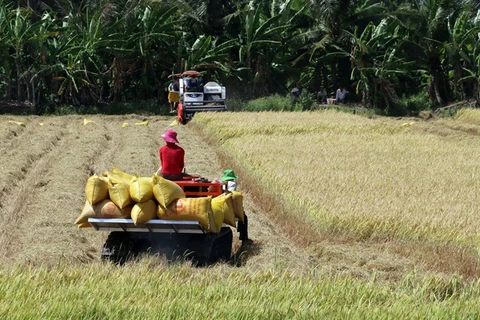Hanoi (VNA) – Nearly the entire Mekong Delta region of Vietnam – an area that makes up 50 percent of the national rice output, 65 percent of seafood, and 70 percent of fruit – could sink underwater by the year 2100, scientists from the Netherlands’ Utrecht University have warned.
The scientists created a delta-wide numerical model and use that as the basis of future predictions. They found that the heavy extraction of groundwater, when combined with the rate of sea-level increase due to climate change that is occurring quicker than forecast, is causing significant land subsidence and could result in the submergence of the entire delta in the future.
Philip Minderhoud, a subsurface and groundwater systems researcher at Utrecht University who led the study, said groundwater extraction was one of the most important in a raft of factors causing the delta to sink on average by about 1cm per year.
In addition, the sea level is rising at a rate of about 3 to 4mm per year.
The Mekong Delta has many opportunities for development, but also faces a number of challenges, especially in climate change and rising sea levels.
Facing this situation, the Vietnamese Government has issued a decree regulating restrictions on the exploitation of groundwater in freshwater areas in the region. Relevant agencies are also drafting policies to cope with factors that erode the delta’s land.
Vietnam is scheduled to hold a forum on sustainable Mekong Delta development in response to climate change this year.
The delta makes up 12 percent of the nation’s total land surface area and 19 percent of its population. The region features a dense network of rivers and canals, holding strengths in agriculture development, food industry, tourism, and renewable energy.
The delta is the biggest agriculture production centre in Vietnam with 95 percent of rice and 60 percent of fish for exports.
This is also a favourable place for trade exchanges with countries in the Association of Southeast Asian Nations (ASEAN) and the Greater Mekong Subregion (GMS). –VNA
VNA

























